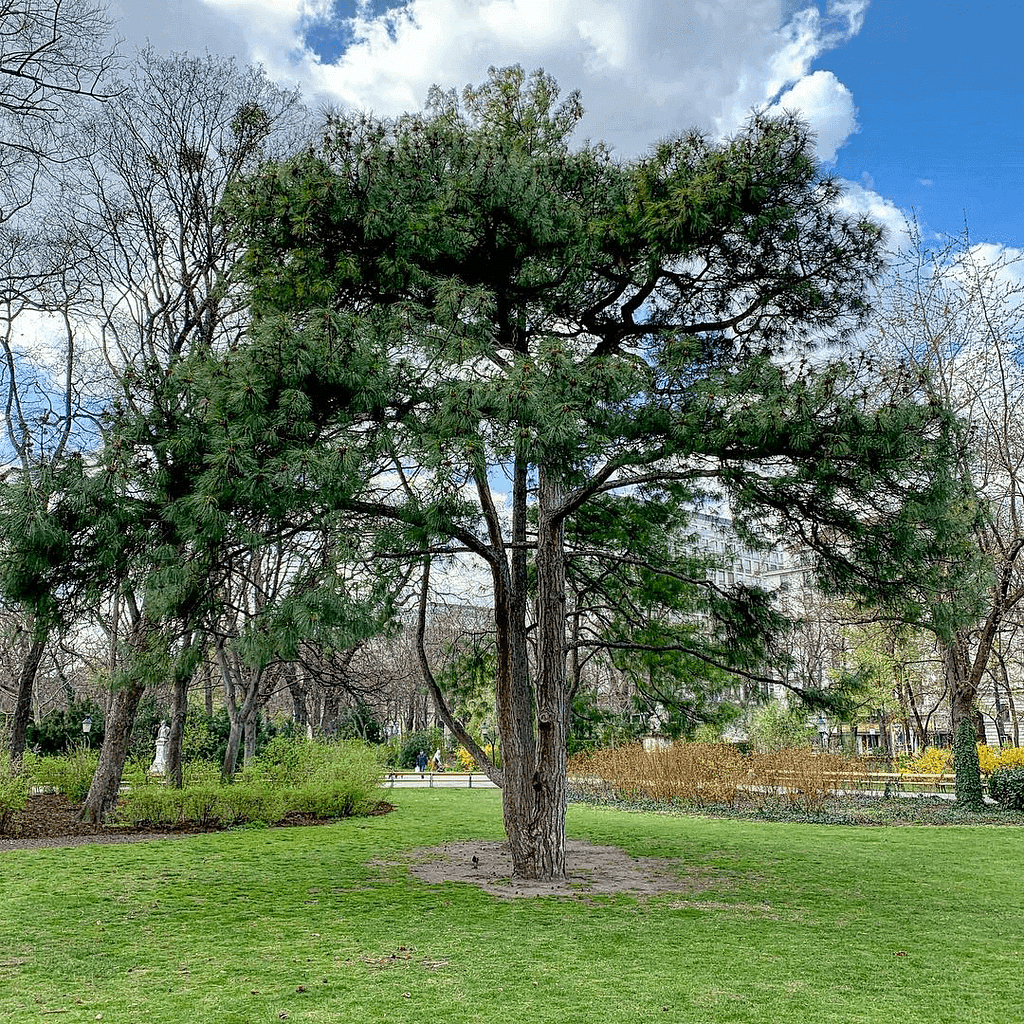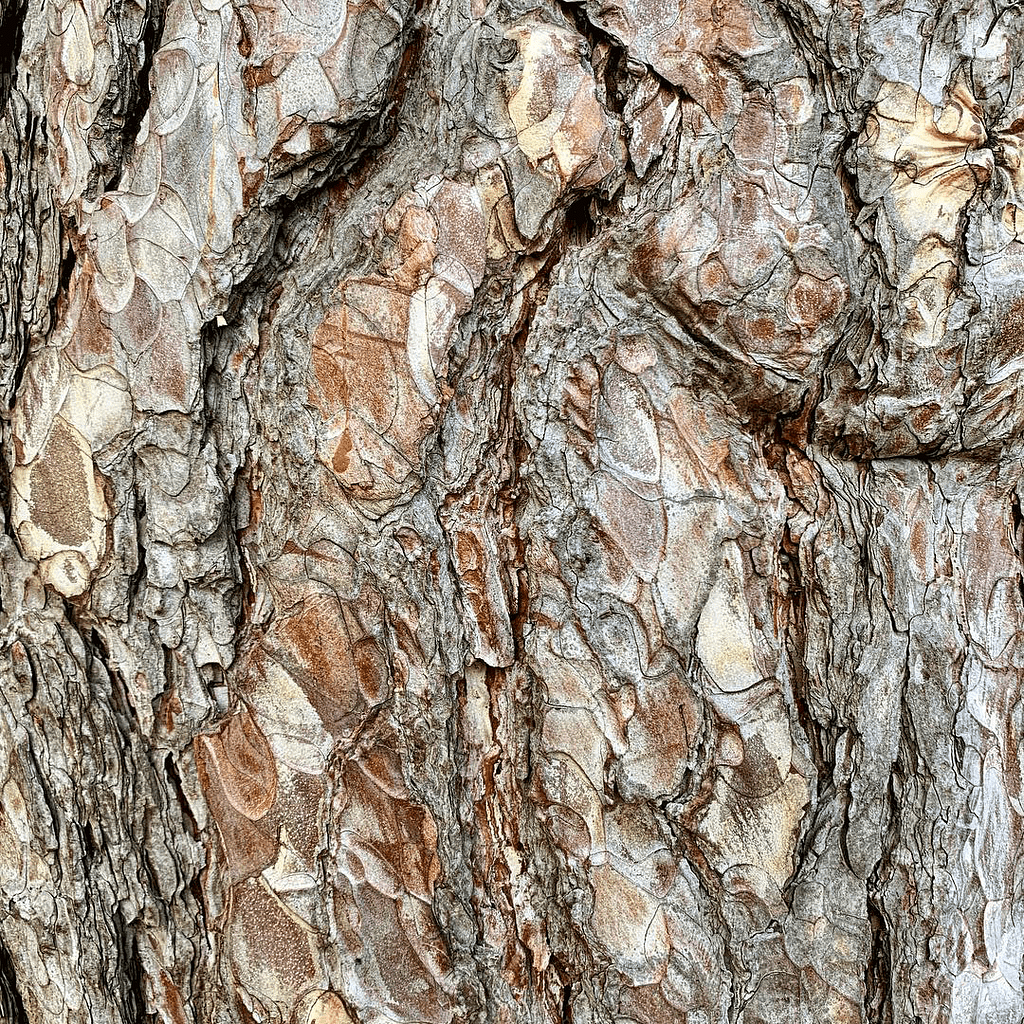Today I am going to show you how to make delicious pine wood bread. Yes, your read correctly, PINE WOOD, as in wood from the pine tree.
Growing in nearly every environment, from semi-arid deserts to rainforests, and from the Italian coast to the highest Alpine mountains the pine family of trees is as hardy as it gets.
Equally favorited as park tree, for its apparent beauty, and as forest plantation crop, due to its near perfect trifactor of fast growth rates, hardiness and light, yet durable timber, pine trees are everywhere. Chances are that there is one growing very close to your home.

Pine Tree 
Pine Bark 
Pine Needles & Cones
So how and, more importantly, WHY would you make bread from it?
For me the idea came while researching my book “Der Geschmack von Holz”. Not only was I on the hunt for tree flavors in our food but I also wanted to find a way to eat actual wood. It was there that I came across several mentions of so called “Famine Bread”. Backed during times of food shortages it was bread that contained a certain percentage of sawdust, tree bark, or even straw instead of costly flour. Also, dishonest bakers, who wanted to save a buck, were known to sell sawdust enriched bread to their unsuspecting clients. Doing so was however risky business, as being caught entailed severe punishments. Known from the 13thcentury onwards was for example the ducking of bakers, were the offending baker was locked in a cage that was then lowered into the river or even a cesspit. Although it was intended to be a form of public shaming some unlucky bakers actually died during these proceedings.[i]

Picture from Wikimedia Commons
Nowadays we are presented with a wholly different picture. Today it is actually common to use wood (or better cellulose – one of its three main components) in food production. Going under several ingredient list names, including “powdered cellulose”, “carboxymethylcellulose”, “microcrystalline cellulose”, or “MCC” it is used in everything from ice-creams and sauces to grated cheese and baked goods. Its advantages are thereby manifold. Due to its ability to absorb and gel liquids it is an excellent thickening agent and emulsifier for sauces and creams. Also, its strong anti-caking properties that keep e.g. pre-grated cheese from sticking together are highly valued by the food industry. So are its abilities to keep baked goods moist for longer. For the health conscious consumer it adds dietary fiber to food items without influencing their taste or mouthfeel. Finally, due to its indigestibility by human guts, cellulose is an excellent calorie reducer that is adding filling bulk to foodstuff.[ii]
But why use tasteless cellulose, a highly processed byproduct of the paper industry, when there is natural wood available? Having all the same qualities it can even add fantastic flavor notes to many dishes. Pine Wood Bread is thereby an excellent example. Once baked it exuded an intense fragrance that reminds me of morning walks through a light flooded pine forest. Its sappy, marginally bitter note meanwhile balances perfectly with the sweet, starchy taste of the flour. Combined with butter it is a match made in heaven.

Pine Wood Bread Recipe*:
Ingredients:
250g Wheat flour (bread flour if you have it)
250g Spelt flour
100g Fine Pine Wood Sawdust (ideally ground even finer in a food processer)
325g Buttermilk
55g Water
5g Yeast
10g Salt
Baking Utensils:
Large Cast Iron Pot with Lid
Mix all the ingredients in a bowl and knead for 15 minutes. Let it rest for 1 hour in a cool room. Knead it again for 5 minutes, fold it and then let it rise for another hour in the same room. Subsequently fold it again and let it rise for another 45 minutes. Finally fold it again, shape it into an oval loaf and let it rise for another 30 minutes in a warm room.
Once 15 minutes have passed place the large cast iron pot without the lid into the oven and put it on max temperature.
After the bread has risen for the full 30 minutes, plop it into the very hot pot, put on the lid and bake for 30 – 35 minutes until it has a beautiful golden-brown color.
Enjoy!
Share your results on Instagram at @flavorofwood & @artur_cisar_erlach or by using the hashtag #flavorofwood.
Subscribe below for news and updates.
*adapted from a recipe[iii]on ploetzblog.de
[i]https://austria-forum.org/af/AEIOU/Bäckerschupfen/Bäckerschupfen_english
[ii]https://www.thespruceeats.com/what-is-cellulose-1328464
[iii]https://www.ploetzblog.de/2009/11/10/gebacken-buttermilchkruste/


